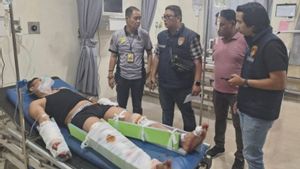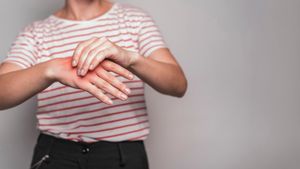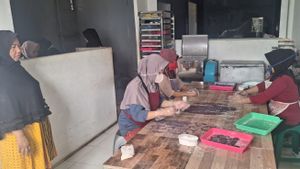JAKARTA - Secretary of the Directorate General of Pharmacy and Medical Devices of the Ministry of Health (Kemenkes) Arianti Anaya said one of the strongest factors that endanger the lives of medical personnel in dealing with the corona virus or COVID-19 is the quality of personal protective equipment (PPE) that does not comply with health standards.
"One of the cases of death was caused by the use of inappropriate PPE, and did not meet standards as personal protective equipment. In fact, medical personnel must protect themselves against this very infectious corona virus," said Arianti at Graha BNPB, East Jakarta, Friday, 17 April.
This personal protective equipment should be designed to prevent the penetration of substances, free particles, liquid or air, and protect the wearer against the spread of viral infections.
Since the COVID-19 pandemic, the need for PPE has increased. Not only in Indonesia, but all affected countries need PPE. The issue of scarcity has made many domestic industries produce PPE. However, unfortunately many entrepreneurs do not understand that PPE cannot be made carelessly.
Therefore, to anticipate the increasing number of original PPE making, the Ministry of Health issued 2 guidelines as a standard reference for handling and management of Covid-19.
"These references are PPE standards in the management of COVID-19, then technical instructions for personal protective equipment to deal with the COVID-19 outbreak. We hope that the industry can use these guidelines as a reference for making PPE," he said.
Determination of the type of PPE to be used in handling COVID-19 must be based on the type of health care facility, profession, and activities of health workers.
For first-level health workers, namely health workers in public practice places whose activities do not have a high risk, can use PPE, namely surgical masks, gowns, and examination gloves.
Meanwhile, second-level health workers who work in patient care rooms take non-respiratory samples from patients or in the laboratory, the PPE needed includes headgear, safety glasses or google, surgical masks, gowns, and disposable gloves.
Then, for health workers level three or the group most at risk must use a more complete PPE, namely head cover, face cover, face protection, N95 mask, coveralls, surgical gloves, and anti-slip boots. The coveralls they use must be able to withstand blood fluids, droplets and aerosols.
"This third level group is health workers who work in direct contact with patients, who are suspected or have been confirmed with COVID-19," explained Arianti.
Materials commonly used for covers to protect health workers at very high risk are usually made of nonwoven or synthetic fibers with very small pores, namely 0.2 to 0.54 microns.
"Of course, this must be proven by the test results of the materials used in an accredited laboratory," he concluded.
The English, Chinese, Japanese, Arabic, and French versions are automatically generated by the AI. So there may still be inaccuracies in translating, please always see Indonesian as our main language. (system supported by DigitalSiber.id)













